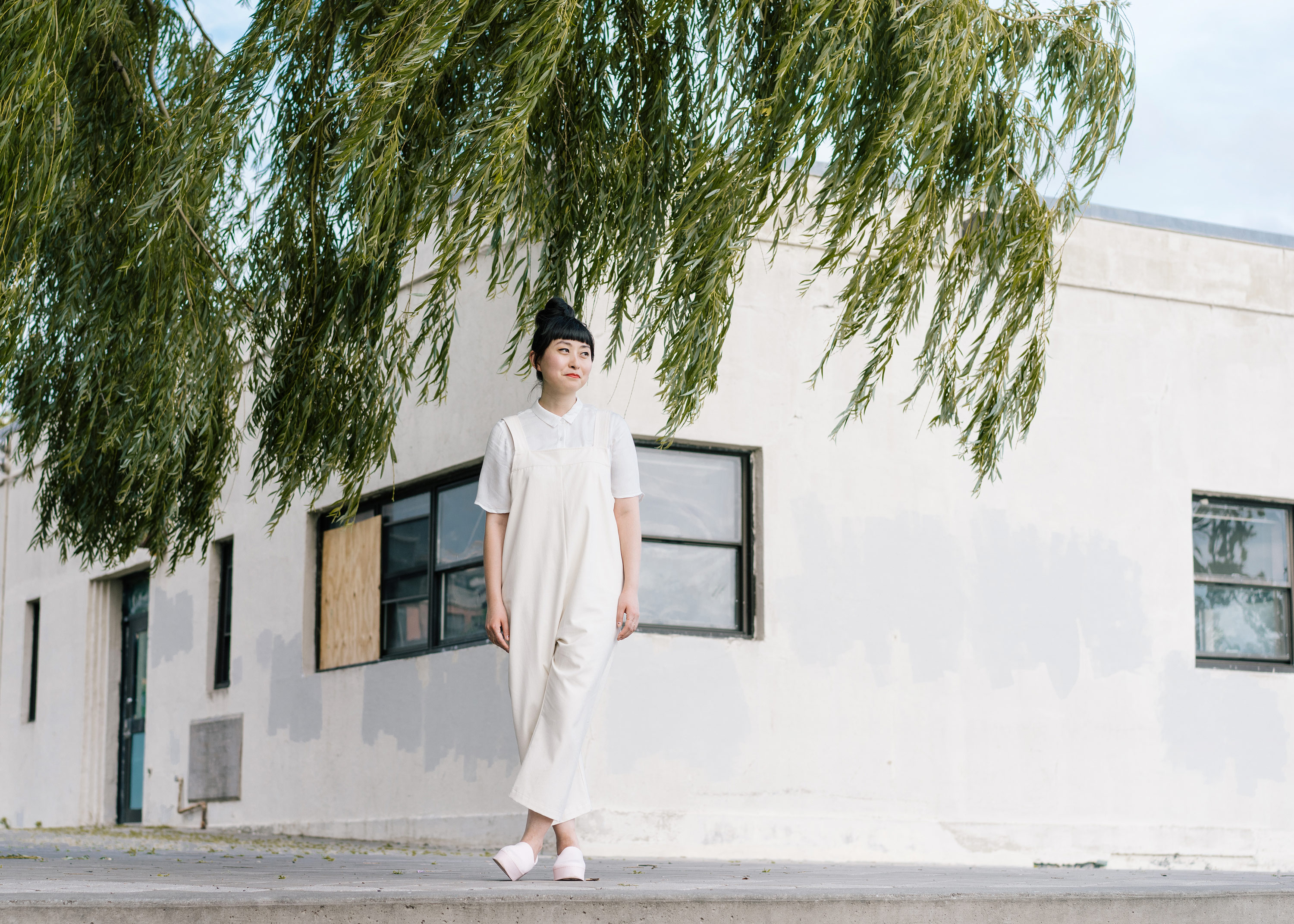
- Interview by Tina Essmaker July 11, 2017
- Photography by Julia Hembree
Jing Wei
- illustrator
Brooklyn-based illustrator, Jing Wei, has been drawing her whole life and found her way into illustration during her college years, after which she moved to New York to forge a career. Here she reflects on her experience of immigrating to the US as a child, how the support of her parents influenced her trajectory, the struggle to find her style—and why she avoided drawing people for so long—and why she’s playing the long game versus seeking out short-term notoriety and fame.
Tell me about where you grew up and how it influenced your childhood. I was born in China and lived there for the first seven years of my life. In 1993, we immigrated to the States. My dad came first to set up a foundation and my mom followed with me a couple years later. Then we started our life in America.
I guess I always drew, but all kids grow up drawing so I didn’t think there was anything special about it. When I moved to the US, I felt a complete loss of identity and culture. I didn’t have anything to grab onto. I felt behind and I tried to catch up by learning the language and learning what American kids liked and did. Drawing was the thing that was consistent the entire time. It was a way to connect with people and keep myself happy and entertained. That’s when it started to click for me.
Fast forward to high school. I was a decent student, but I never gravitated toward any topic as passionately as I did drawing. When it came time for college, it made sense for me to apply to art school, so I put all my eggs in one basket and only applied to art schools. Then my dad and I did a tour of a few of the schools across the country, which is still one of my favorite trips that we’ve taken together.
When he and I went to the East Coast, I fell in love with Rhode Island School of Design (RISD). It also worked out because RISD is a well-known school. My parents thought that if I was going to do this, I should be doing it at the best school and giving it 110%. So I went to RISD and after graduation I moved to New York where I fell into a really amazing community of people.
I don’t have a common story for immigrant children. My parents didn’t put pressure on me. They let me discover what I like, which was incredible. I never got any resistance from them. They’ve always supported me in this decision. I think this is partially because they didn’t grow up with the luxury of choice, so it must be nice to see me in a situation where I can really craft an ideal life for myself.
Does anyone in your family do creative work for a living? Nobody in the entirety of my family history has pursued a creative career. Nobody knows where this comes from. My mom is a computer engineer and my dad is a biochemist.
I read that you have a background in printmaking. Did you study that at RISD? I got a BFA in illustration. It was kind of broad because I was brought up on technical training, so I wasn’t too conceptual with my work until the end of my time in college. I didn’t discover printmaking until junior or senior year. At the time, I was grasping for a technique to help boost my ideas because I was having trouble taking things from start to finish. Printmaking was this medium that made everything look cool, and also brought a different dimension to the work. I was fascinated by the process, and that’s what I was exploring at the end of my program at RISD.
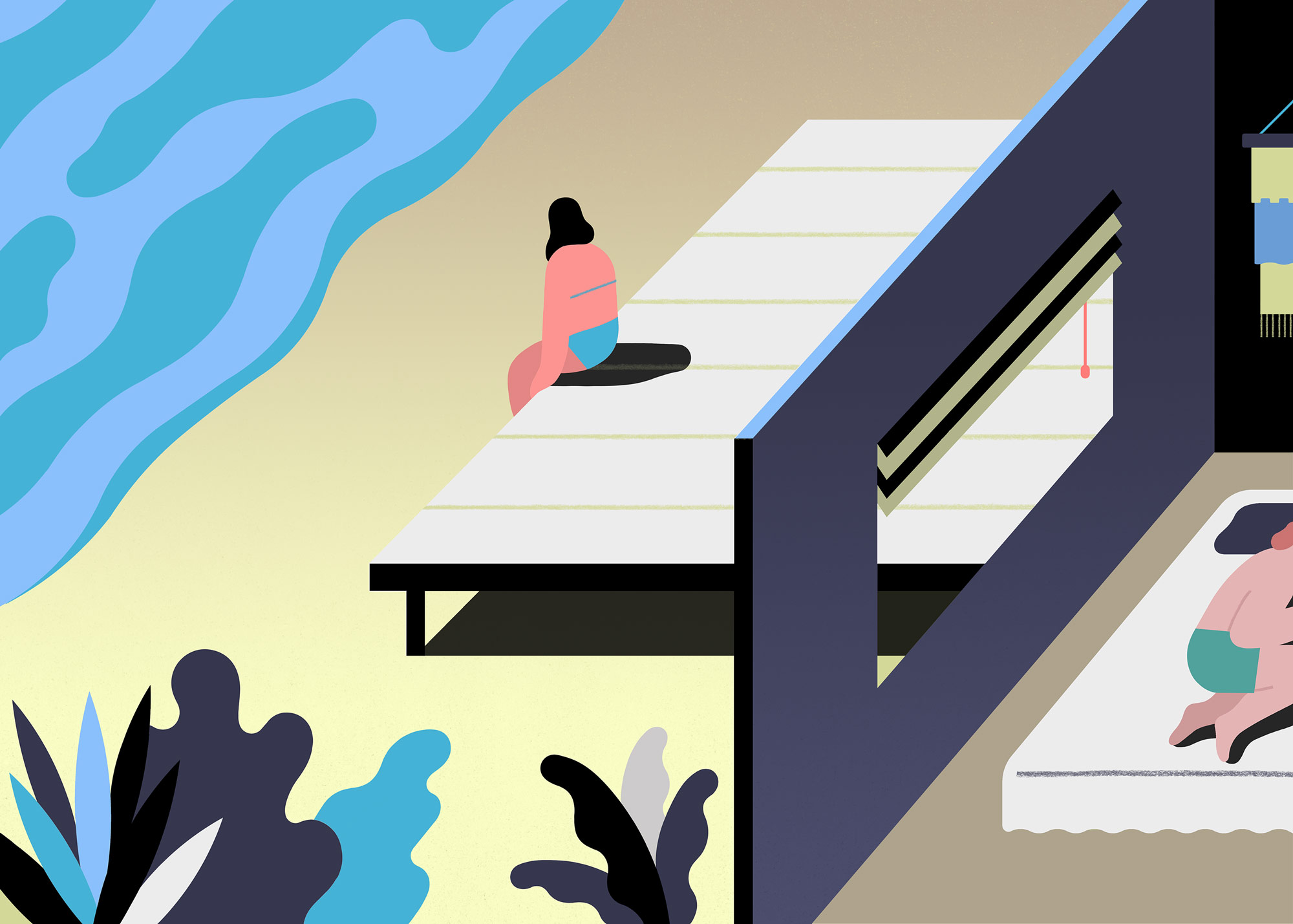
Did you know that you wanted to move to New York after college? Yeah, it seemed like the logical next step because I wasn’t going to move back to California and everything I was interested in was in New York. I wanted to go freelance and I didn’t exactly know how I was going to do that, but I met so many talented and inspiring people at RISD, which is a huge part of going to a college like that. You build a community that stays with you throughout your career. So I moved to New York in 2008 with a bunch of friends and we shared this crazy loft in Bushwick back when it was more affordable. (laughing) Our bedrooms didn’t even have walls, which you’re down for when you’re 22. We were somewhat living that artist’s dream that we had envisioned for ourselves.
Tell me about the first few years out of college when you were freelancing. I want to know how you got clients, what the biggest financial challenges were, and if you were you doing other work to pay the bills while building your practice? Everyone has their own path and I see some people who are superstars right out of the gate, but I was not one of those people. I am a practical person and I struggled to be confident in my work right out of school. I got to New York and didn’t want to burn through my savings in the first six months so I knew I had to get a job to support myself. Once you move to New York, it’s like this timer is set off and there’s a sense of urgency to create stability for yourself.
I had an internship working on an Adult Swim pilot. That taught me how to work with other people, how crazy people can be in New York, and how little they can care about you as a person. I was just a set of hands. After that I got a steady part-time job teaching Mandarin to babies on the Upper West Side, which was fun, but very bizarre.
At the same time, I tried to pick up freelance work. I sent out promos and really hustled, but sometimes it just takes time. And it takes longer for some people. I think that my portfolio wasn’t ready and I needed time to develop my technical skills and become confident in my ability to execute strong concepts. I owe a lot to some of my earlier clients, like the New York Times and Bloomberg—people who had fast turnaround jobs to test me out on. That helped me build my portfolio and before I knew it, I had solid editorial work. Once that foundation was established, I was able to gain more momentum.
“When I moved to the US, I felt a complete loss of identity and culture. I didn’t have anything to grab onto…Drawing was the thing that was consistent the entire time. It was a way to connect with people and keep myself happy and entertained.”
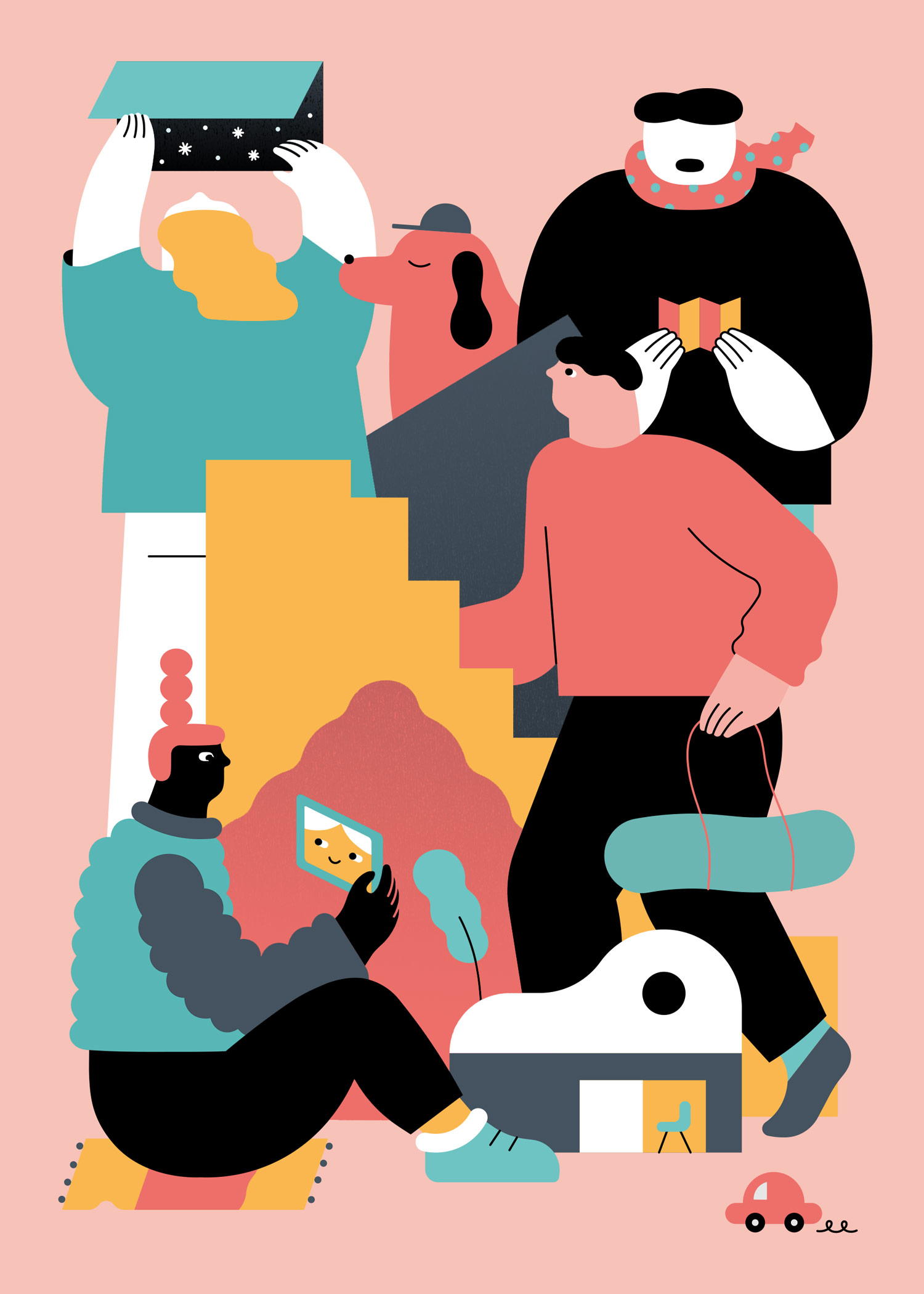
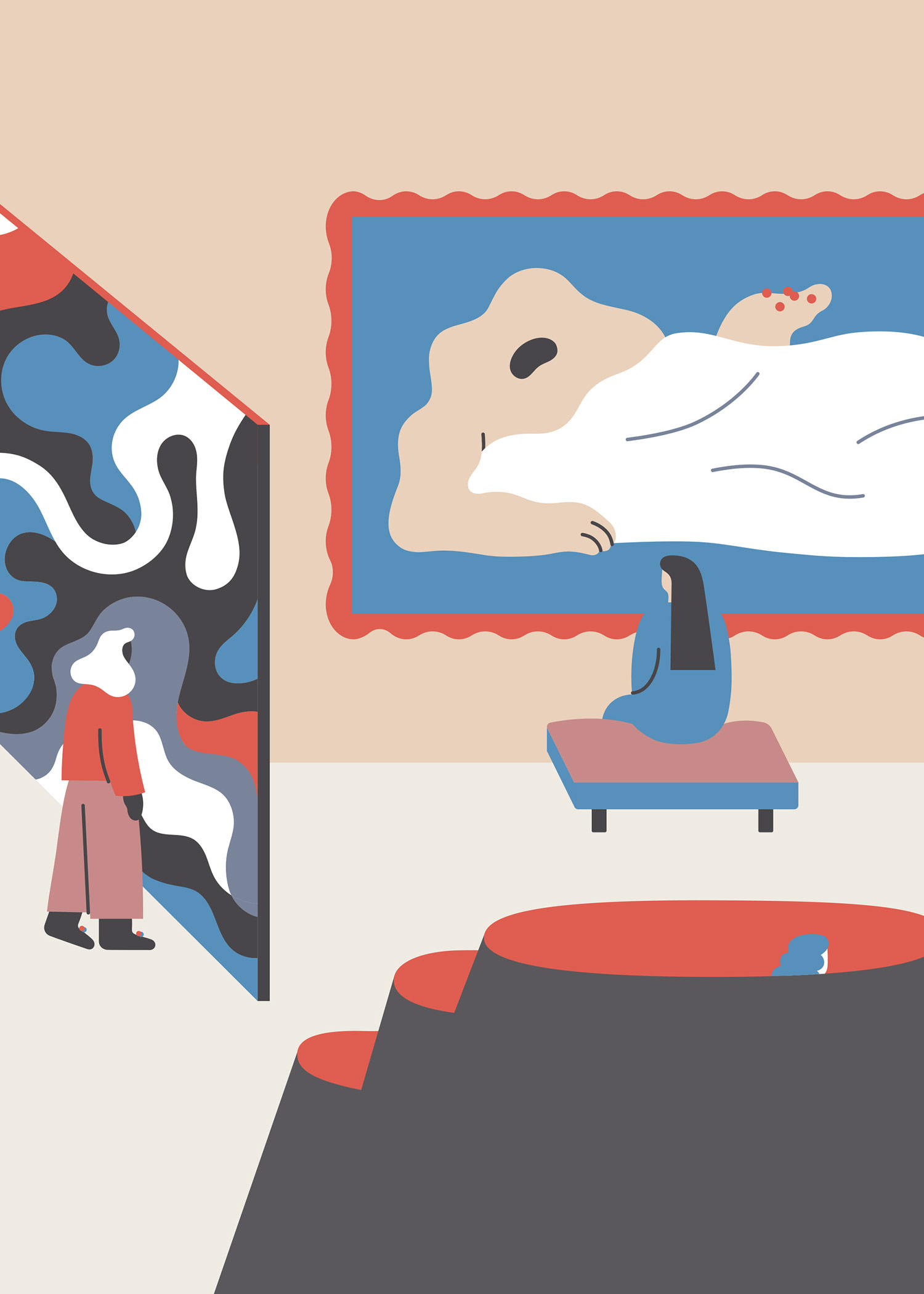
When were you able to focus on illustration full-time? Graduating in 2008 was not the best timing. That was scary. At the time, there weren’t too many in-house positions available. You could freelance, work in publishing, become an art director, or teach. There weren’t that many paths, or at least it didn’t seem like it at the time.
I actually got my first job when I was a senior in college. I had taken a class taught by Chris Buzelli, who was really good at helping students develop their voice through editorial assignments. His wife, SooJin, art directs a suite of financial magazines, and she hired me for a cover right before graduation. That was a huge boost. I was on cloud nine. I had a chunk of money that I thought was so much money. And then there was a lull after college, and I had to experience feeling lost for a bit, before finding focus again. But I don’t think there was one singular job that made me feel like, oh my god, I made it. It was a lot of different things coming together at once. At some point, I realized that it was actually feasible to fully support myself through illustration, and that was a really awesome feeling.
One thing that did play into it was getting a studio. Around 2010, I decided to invest in a space and put down the money and take it more seriously. With that mentality, something shifted. I had the space and felt like a business. I went to work every day for consistent hours. The rest of it came along with that.
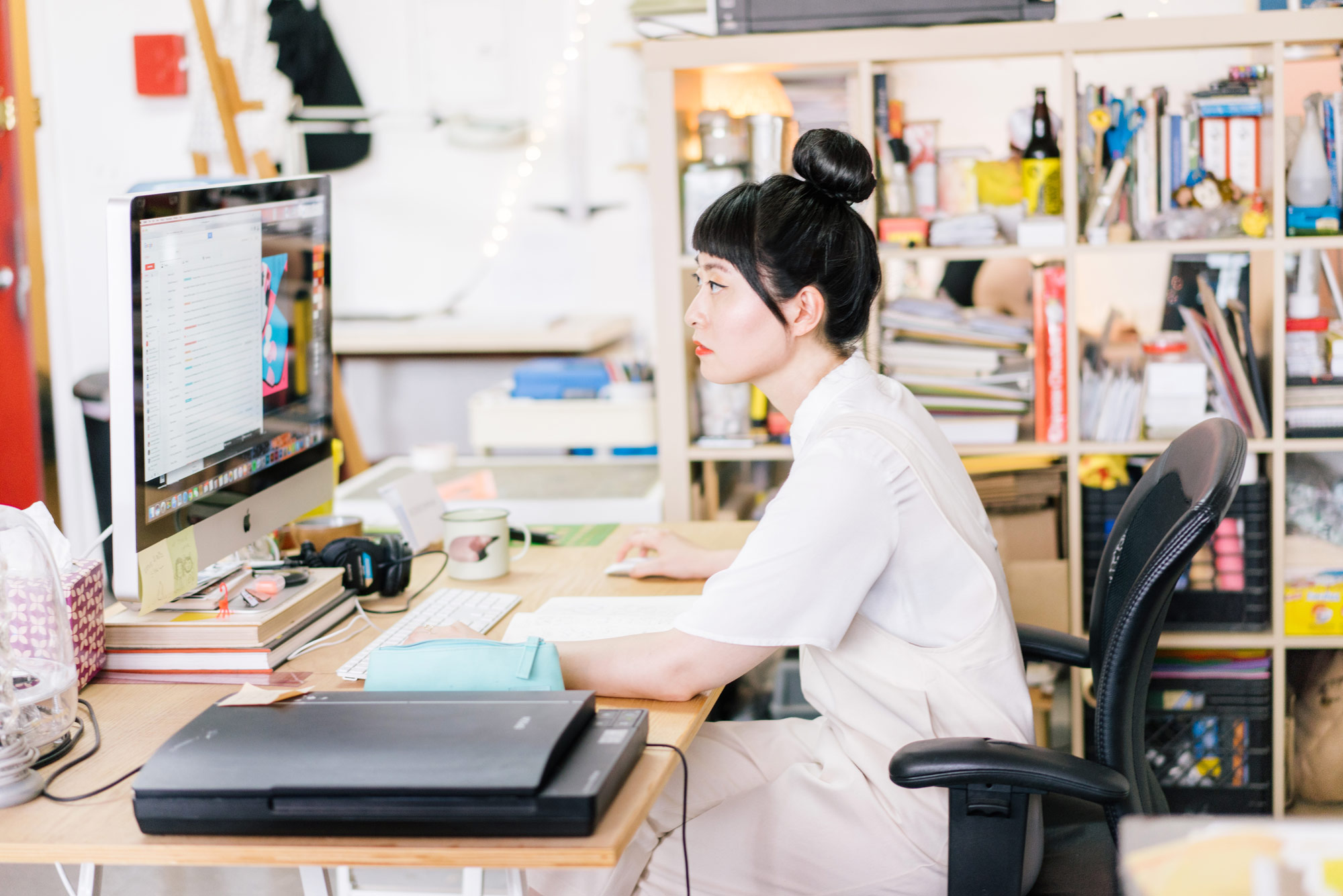
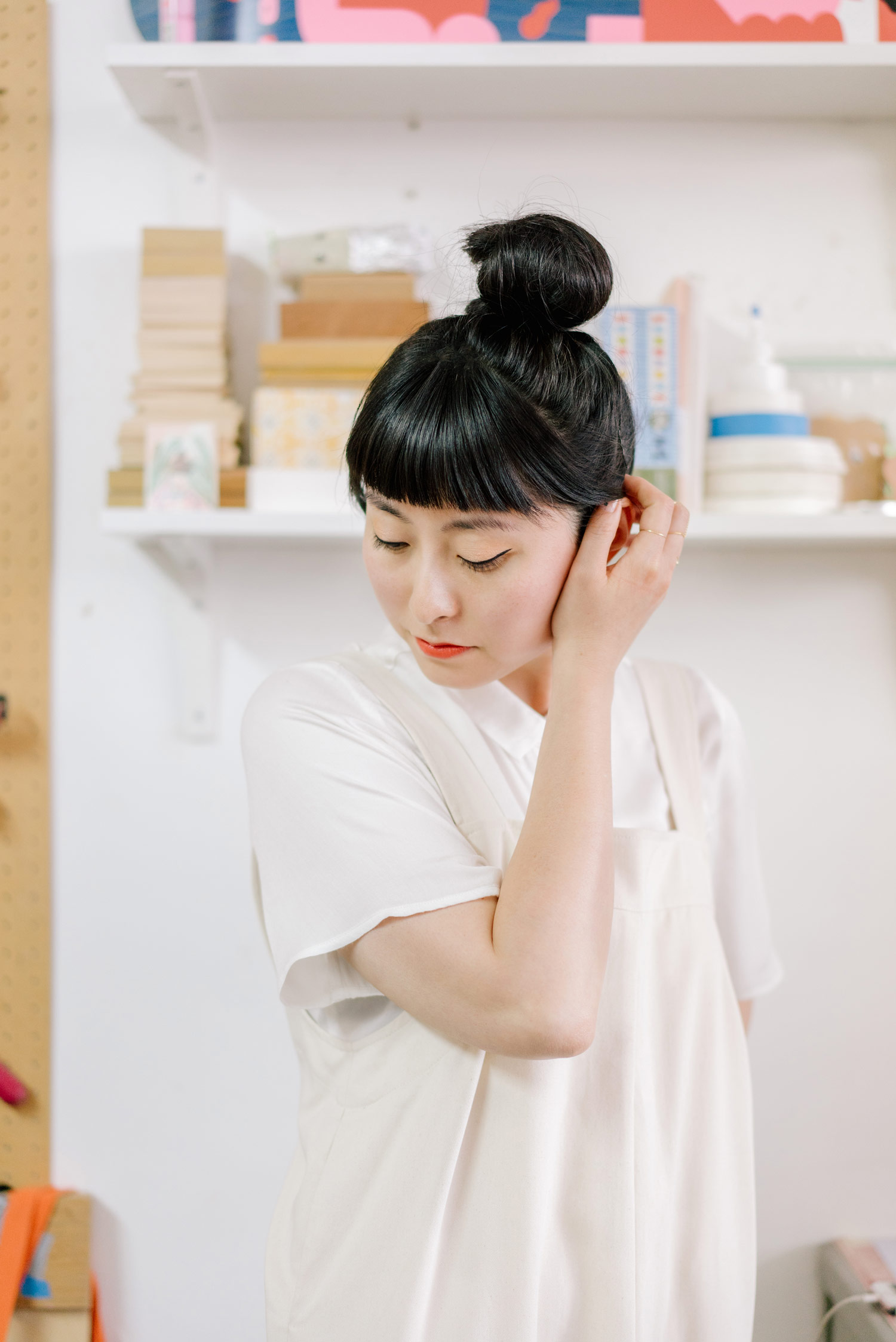
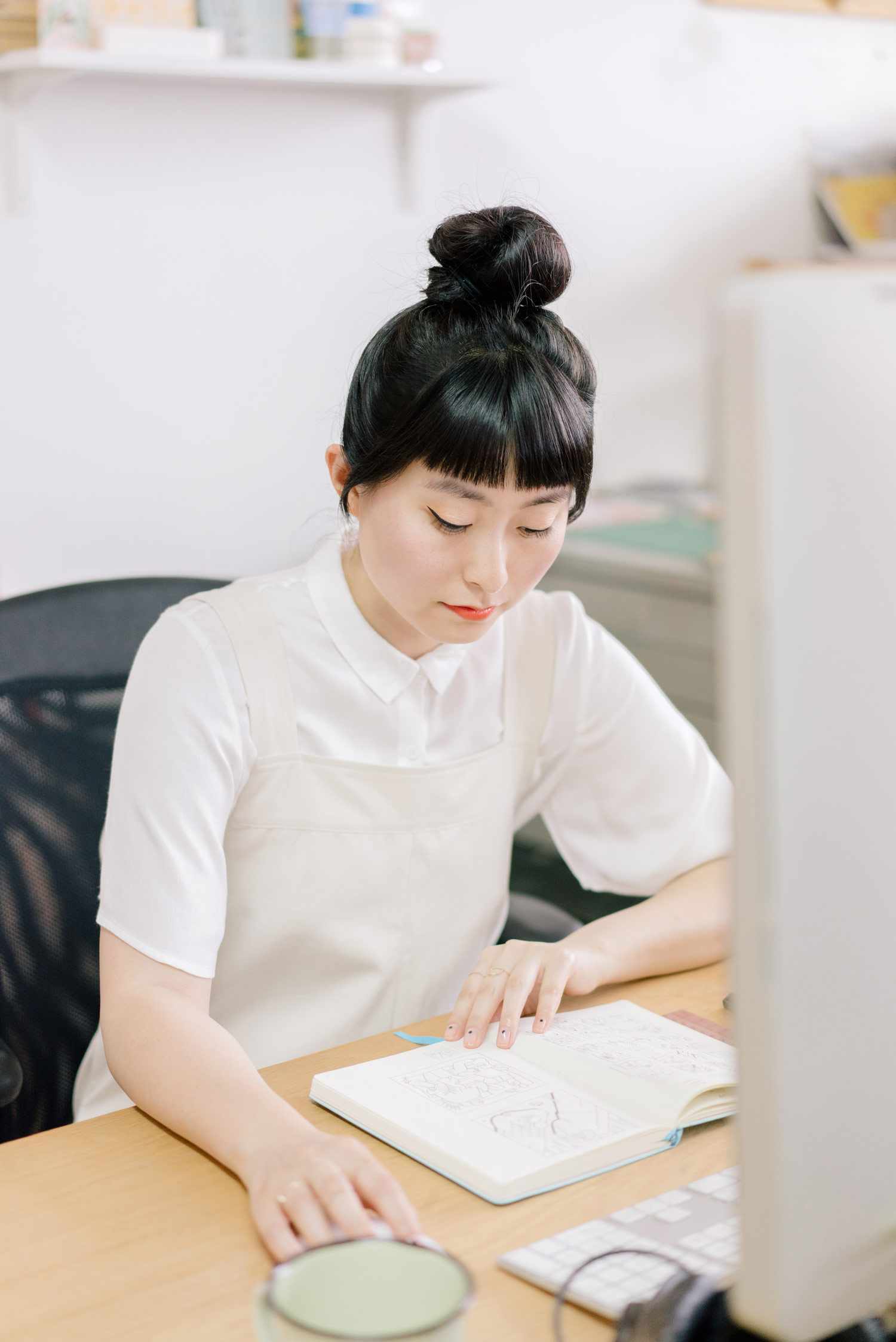
Let’s talk about your style because people starting out are thinking about finding their unique perspective, and you have that, especially in the way you draw people. Was that a conscious evolution or was it a struggle? I think that’s always been a tricky thing for me. It’s interesting to hear from other people that I have a very distinct style because sometimes I feel like it’s still all over the place. When you’re starting out, there can be pressure to make your work look cohesive. And that can sometimes cause you to make drawing or design decisions that are forced, purely for the sake of consistency. I’ve found that the more I got away from that thinking, the more my style has strengthened.
It’s funny that you mention the way I draw people, because I avoided drawing people for a solid two years in the beginning. For some reason, it was really intimidating to me, probably because there are literally a million ways to draw a person. So I basically drew animals for every assignment, which got old quickly. At some point I realized that I never wanted to draw another armadillo again, so I finally started to explore how I wanted to depict people. Now it’s one of my favorite things to draw.
My style has also naturally evolved through embracing various mediums. I used to do a lot of printmaking with block prints, so I made drawings that catered to the process. I didn’t work digitally until three or four years out of college. It’s still a fairly recent thing for me, but when I learned it, I really embraced it. That gave my work a completely different look and feel.
I do have this underlying world I’m building at all times that I incorporate into assignments, but I also look to the prompts from jobs to dictate content. That guides me along to try different things and figure out what I like. That’s why I like freelance illustration—the turnarounds are so fast that you can try it and move on. If it works, keep it. Otherwise, you can discard it and it’s not a total loss. That helps me progress. Sometimes I surprise myself.
It sounds like your style has developed through a combination of experimenting and making a lot of work over time. Totally. Effort and experimentation is a lot of it. At this point in my career, I want to find more time for experimentation. Once you get in the cycle of doing job after job, you lose that sense of play. I want to stretch myself. In order to do that I need to stop, make time, and take risks to do things I haven’t done before.
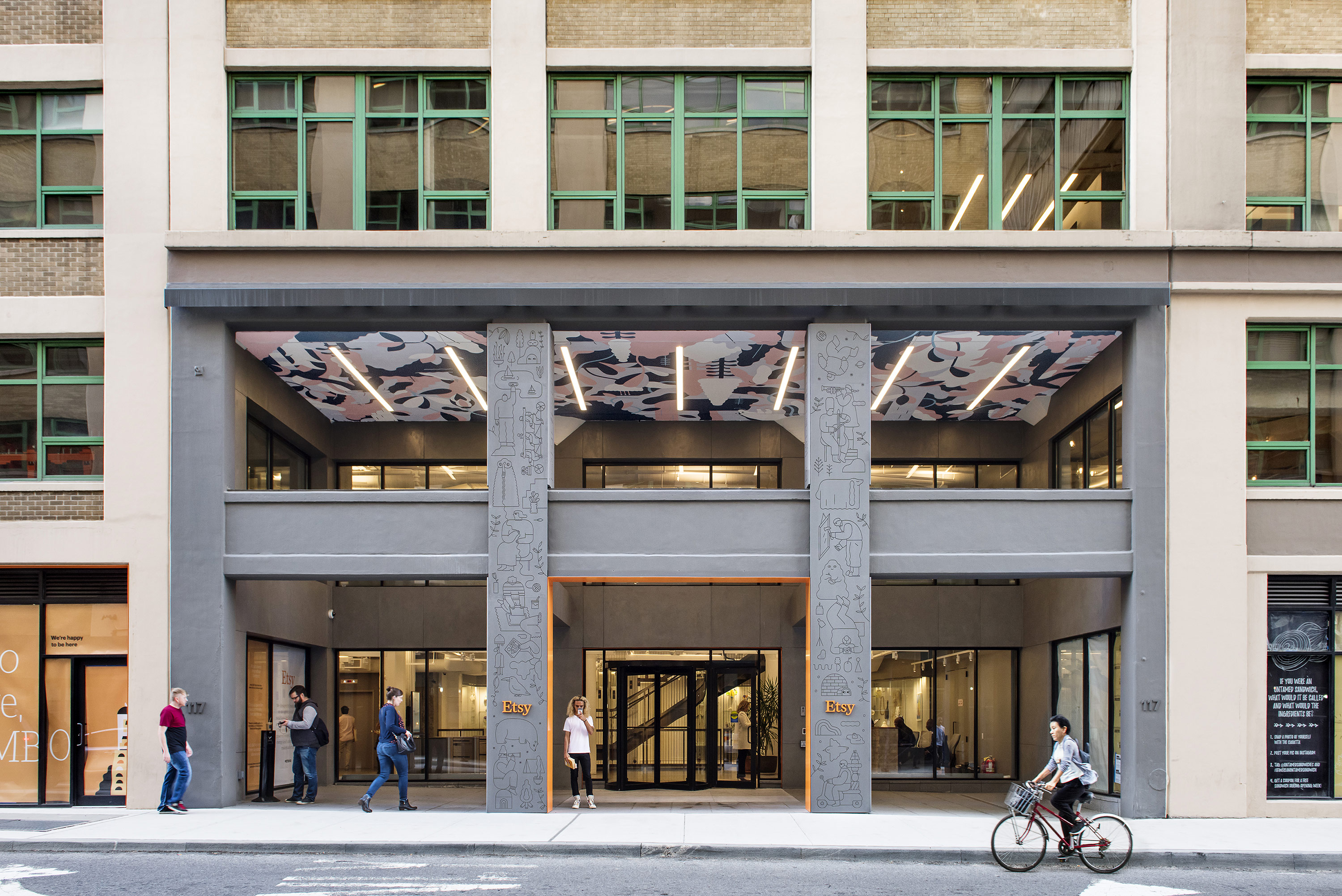
“…I want to find more time for experimentation. Once you get in the cycle of doing job after job, you lose that sense of play. I want to stretch myself. In order to do that I need to stop, make time, and take risks to do things I haven’t done before.”
Do you feel a responsibility to contribute to something outside of yourself. You mentioned that you teach—is that a way you choose to give back? Definitely. I never thought that I would go into teaching. The opportunity fell into my lap. A couple of my friends were co-teaching this publications class at Pratt and they emailed me out of the blue and said they couldn’t do it anymore. They asked if I would take it over. The class was right up my alley and I ended up loving it. Pratt kids are so hardworking and they bring a lot to the table. It feels more like a collaboration, like I’m working together with them.
But, yes, there’s an overarching feeling of social responsibly that I think we all have as people, especially right now. In terms of creative work, I do want to give back as much as I can. I see teaching as one way to do that. I try to meet with people who want to chat and ask me for advice. I also recently started mentoring a high school student. There’s this cool program called Built By Girls, which empowers high school women who are interested in art and tech. I meet with this girl once a month to chat with her and help her figure out what it is that she wants to do.
That sounds amazing. What have you learned through teaching that you haven’t learned through client work? Students are so smart. I feel like young people are underestimated, but they are right there with me in critique and conversation. As a freelancer, you can often work in a silo. You’re making the work and your hands and mind are busy. You hardly sit down and look at your body of work and assess why you’re doing it. Teaching raises these bigger questions about what we’re doing and why we’re doing it, about why something works and another thing doesn’t. Being mindful of that on a regular basis is good. In the end, my students are giving me a perspective that I don’t get from my peers and coworkers. And they definitely expose me to a lot of memes, so I feel like I’m staying hip. They give me shit if there’s something I don’t know, which I like because it means I’m not so old that they’ve given up on me. (laughing)
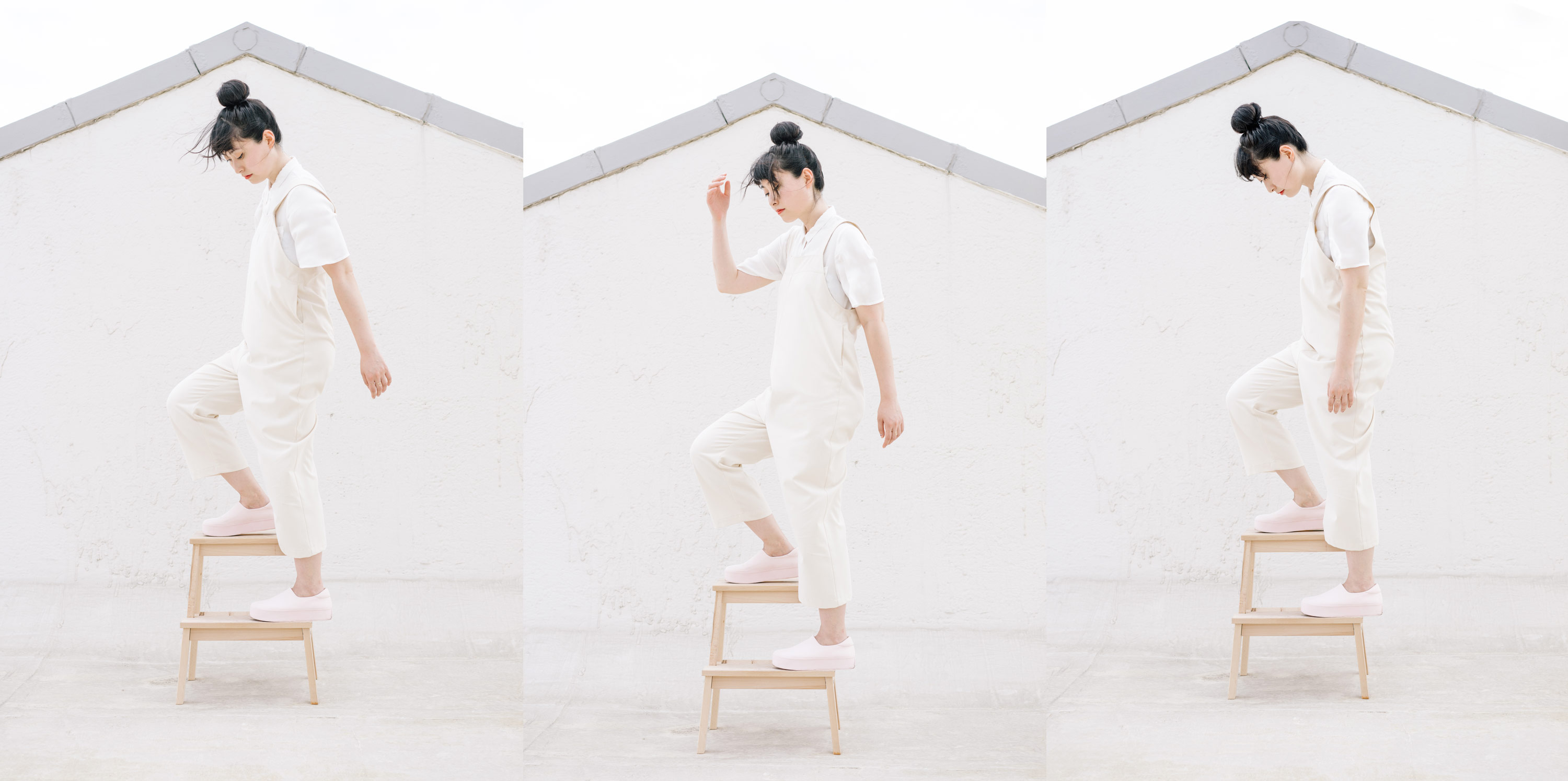
So you have your own practice, you teach, and you also spent a period of time working for Etsy. Tell me about that. I was the illustration director there and worked for them part-time for about three years. I went to the office two days a week and ran illustration on the brand design team. I got started with them when the creative director reached out to me because they wanted an illustration presence. I did a few spot illustrations for them and then I freelanced with them for a bit until they offered me the opportunity to work with them on a more steady basis while still retaining the freedom to do client work and hold onto my style. That was an awesome, fulfilling, and completely unexpected part of my career.
It’s nice to have different pieces to your practice. Yeah, and the grass is always greener. People who are in-house want to freelance. People who freelance are always terrified that work won’t be steady. I feel like that experience satisfied both worlds. As a freelancer, it’s not always glamorous. You have to take on shit jobs to pay the rent sometimes. Having the set income with Etsy allowed me to be more picky about the projects I took on. And having that time and breathing room for my work was invaluable. It was a great experience.
Do you feel creatively satisfied with the work you get to do and how you split your time? I have consistent moments of creative satisfaction, which I think is pretty much the best you can hope for. I’m making work I’m happy with, but at the same time, I still see a lot of potential in myself. I’m excited to explore that.
“Teaching raises these bigger questions about what we’re doing and why we’re doing it, about why something works and another thing doesn’t. Being mindful of that on a regular basis is good.”
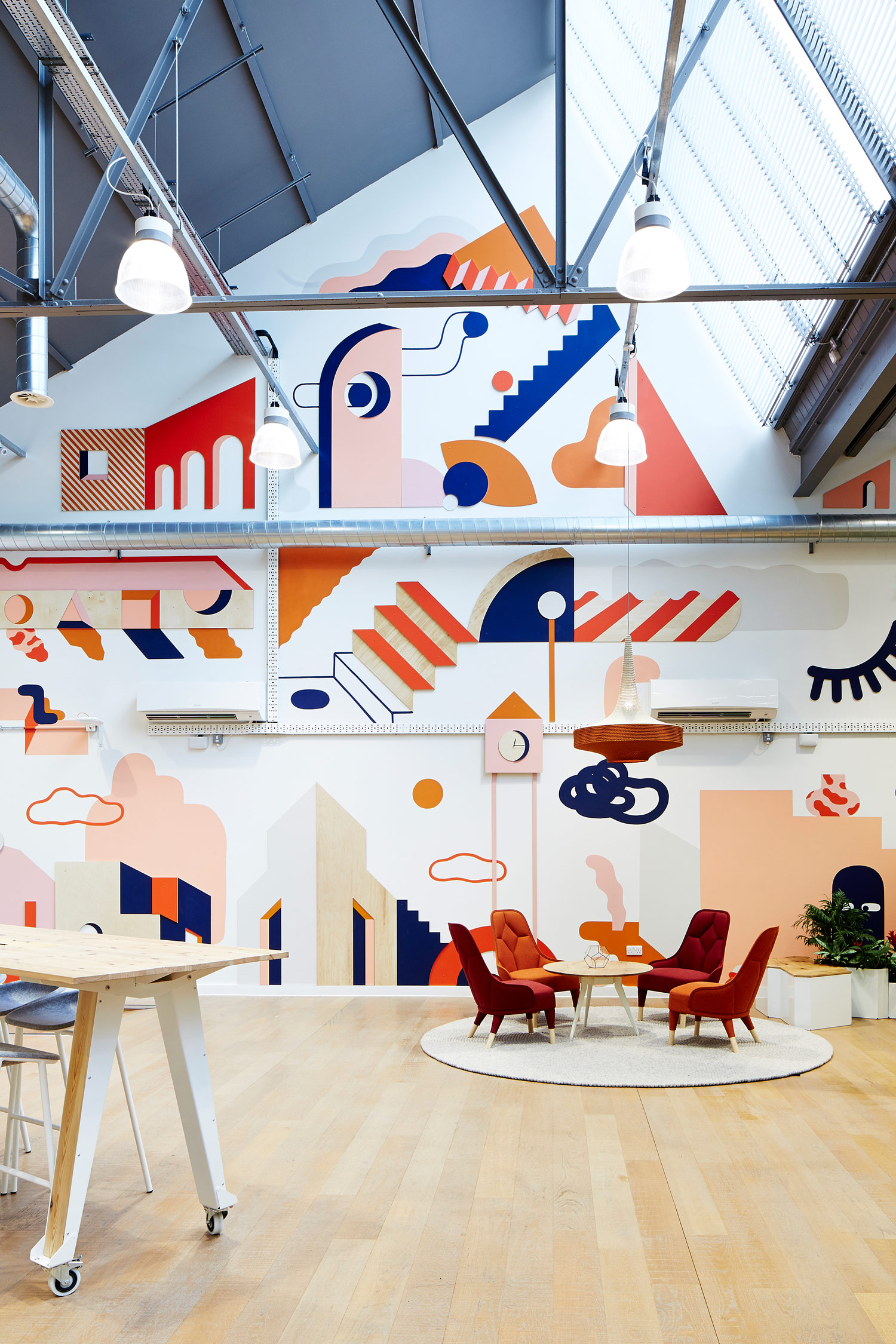
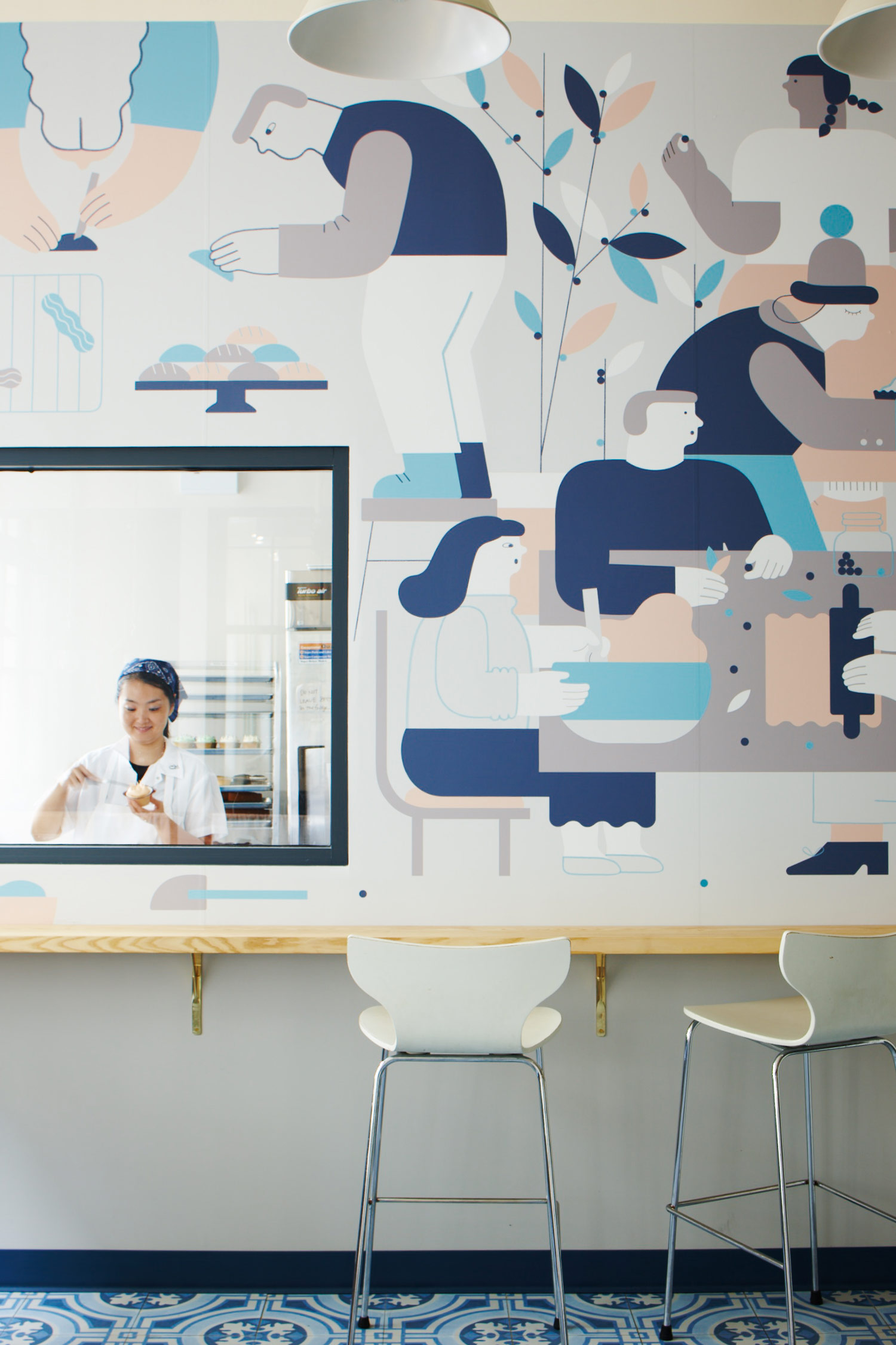
Are there any particular projects or mediums you hope to explore? I’m really good at fast conceptual thinking and constructing an image in an appealing way. Those are the basics of my work. But one thing I struggle with is slowing down. I think it would be fulfilling to work on a long-term project, like a book, and maybe dive into some storytelling. It would be nice to start something that doesn’t have an immediate end in sight, and could evolve over time.
On the freelance side, I’m taking on projects that are new that I haven’t done before. For example, I’m doing a lot of collaborations that involve product design, like skateboards and toys and other one-off projects. Some of it involves making things that people can interact with, beyond a printed page or a screen. I’d love to do more of that and see how my approach to illustration can change based on what I’m designing for.
I’m also interested in making a zine or a general body of work that expresses my personal ideas. It’s taken me such a long time to figure out what it is that I want to say, or if I even have something to say. It would be cool to explore a body of work that is void of a client and the client’s direction.
You mentioned your close-knit community earlier in our conversation. How has it influenced you to be part of such a strong illustration community here in New York? I think I’ve always sought out support from others. I had a lot of friends who moved to New York with me, but they didn’t all do illustration work—some of them were filmmakers, graphic designers, painters, sculptors. That was inspiring in its own way because we were all on the base level trying to do something, but not the same thing.
When I moved into a studio at The Pencil Factory, that was different because it was a group of people who did exactly what I did and they knew my specific struggles. At the time, I was the youngest person in my studio so I was super green and I looked to everyone for advice. That was helpful and gave me a leg up.
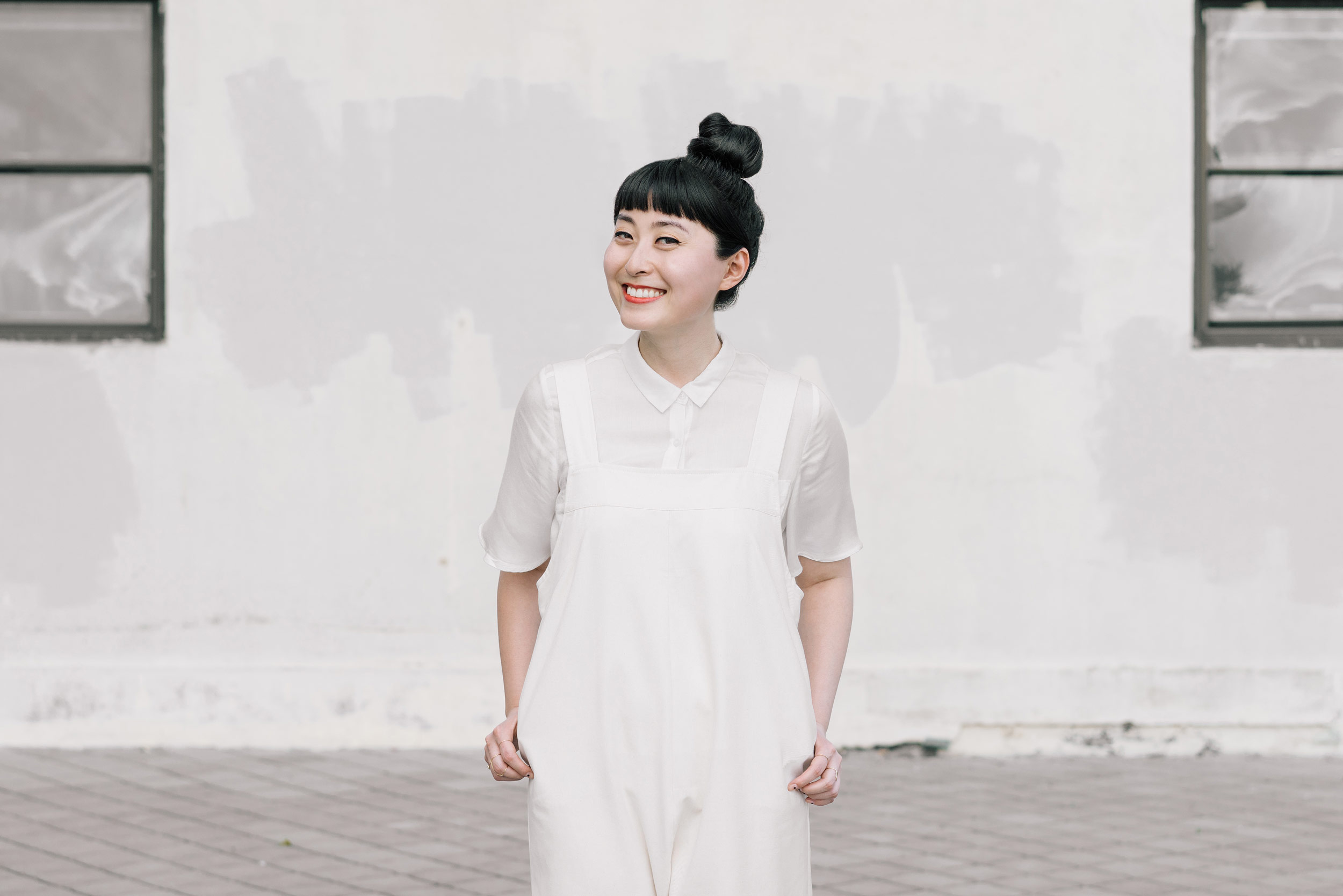
“I have consistent moments of creative satisfaction, which I think is pretty much the best you can hope for. I’m making work I’m happy with, but at the same time, I still see a lot of potential in myself.”
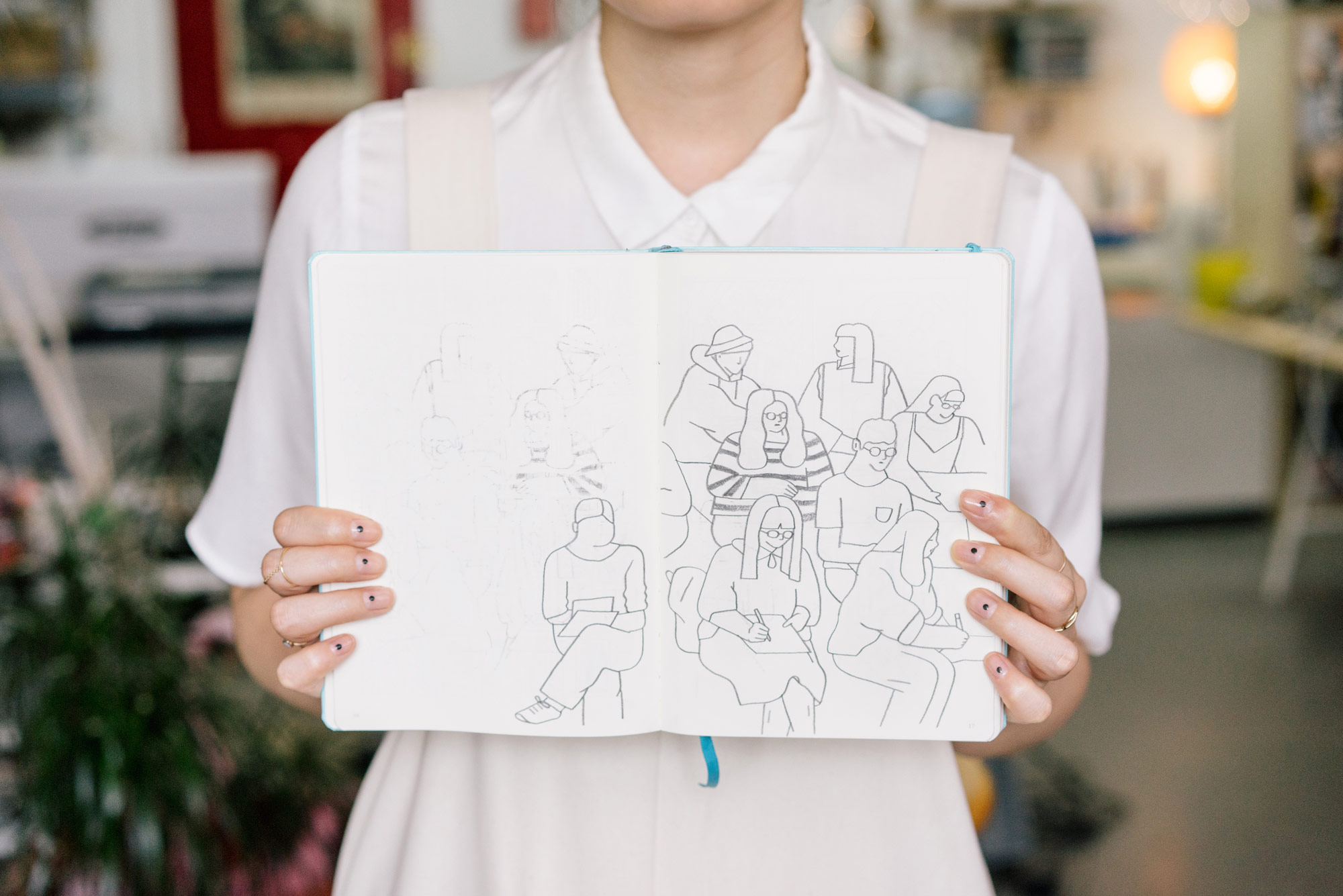
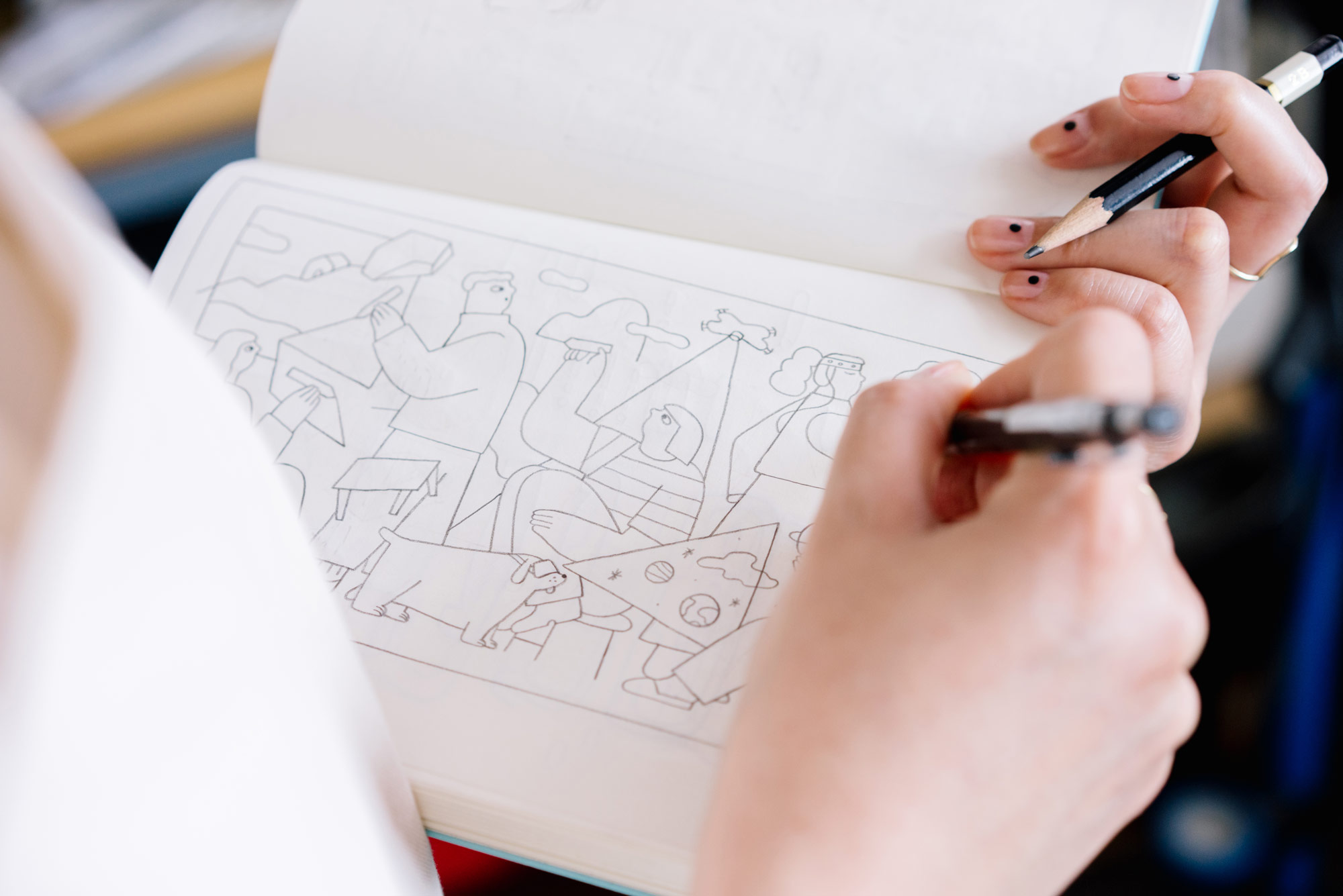
Over the last eight years of running a business, have you gained any practical advice you can give to readers who are freelancing or thinking about it? You definitely have to stay on top of the business part of it. Some people have an easier time with that. I’m more neurotic about keeping everything in check and I enjoy the business side of things. But some people like the support of an agent for that.
The most important thing is to be confident in your worth and not undersell yourself or underestimate your value. Starting out, a lot of my own personal insecurities affected how I ran my business, which was bad. I was undercharging. I wasn’t standing up for myself. There’s also the greater responsibility to maintain a standard for your peers and the industry.
You grew up on the West Coast, went to school on the East Coast, and then stayed here. How does New York influence your creativity and work? I think that there’s such a crazy pace to the city that drives my work and the way I work, for better or worse. New York instills this sense of urgency that encourages you to take on a lot, all at once. If I have a dull moment, I can start to panic and wonder what’s next, which is probably not a good thing, but that’s also wrapped up in this compulsion to constantly be making things. But I think it’s ultimately worth it because when I sit down at my computer to work, I feel satisfied. This is a city that is equally challenging and inspiring, a balance that feels appropriate for this profession.
Considering that you’re the only person in your family who has pursued a creative path, even though your parents were supportive, do you have any advice to someone who’s making decisions about their future? One trait that I think is important to have is persistence. Endurance is a huge part of what makes a lot of people stay in the game. It’s important to be aware of the long game. A lot of people want to get famous quickly or have a ton of Instagram followers as an end goal. That doesn’t matter if you burn out and become irrelevant in five or ten years because you’re doing the same thing. People should not satisfy trends. You want to get to your true voice and spend your time figuring out who you really are so you make work that’s truthful and honest, and I think that will resonate more than anything else.
I love the idea of the long game. I was listening to an episode of Freakonomics about grit. It was about why some people have the grit to endure and some don’t. They concluded that it’s a practice. What’s interesting to me is that grit can be learned. It’s a discipline. I really dislike when people talk about how if it’s fun, then it’s not work. It’s a great thing to strive for, sure—
I don’t think it should all be fun. There should be challenges. There should be struggle. Absolutely. I think you get that satisfaction through the struggle.
Agreed.
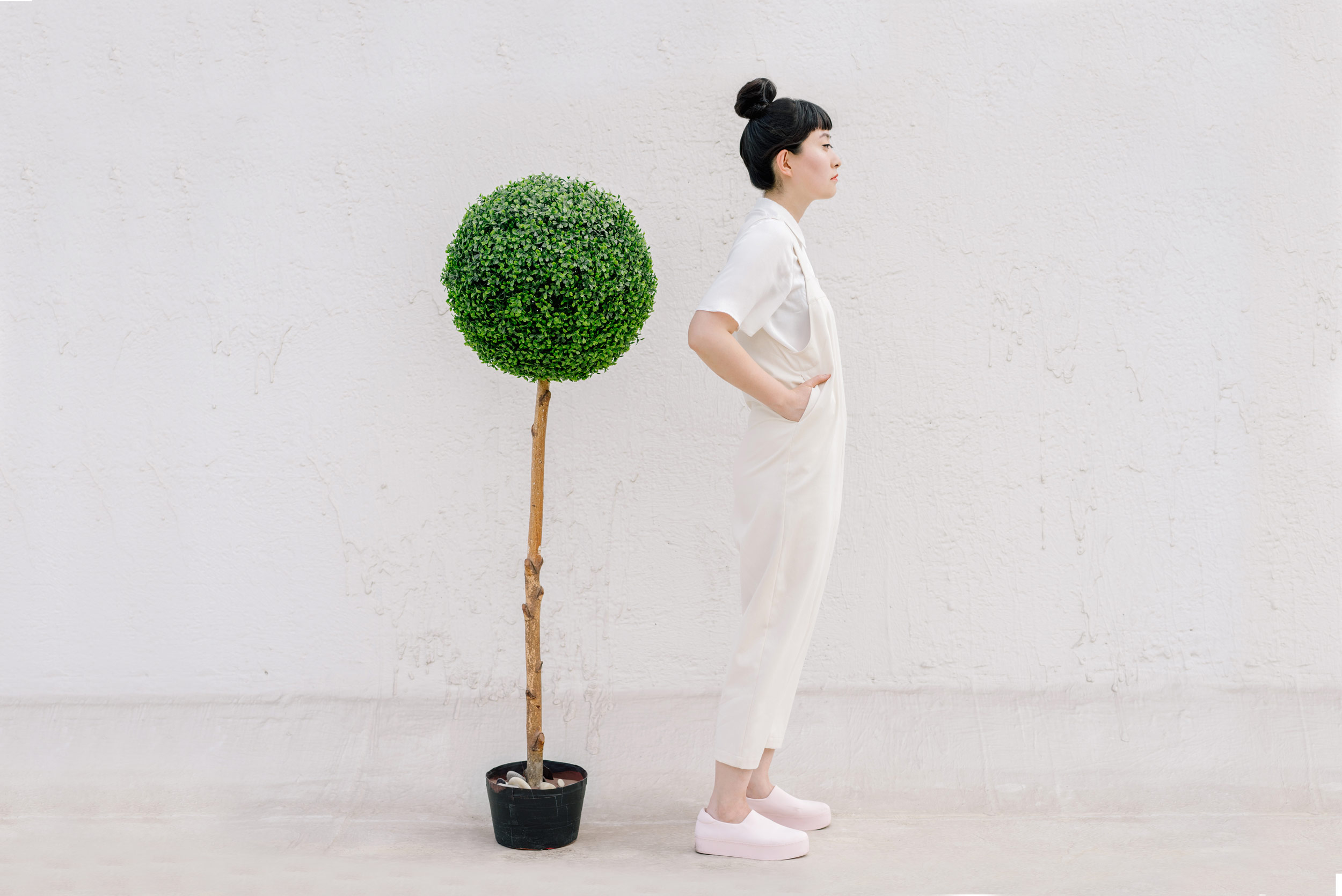
“It’s important to be aware of the long game. A lot of people want to get famous quickly or have a ton of Instagram followers as an end goal. That doesn’t matter if you burn out and become irrelevant…”
